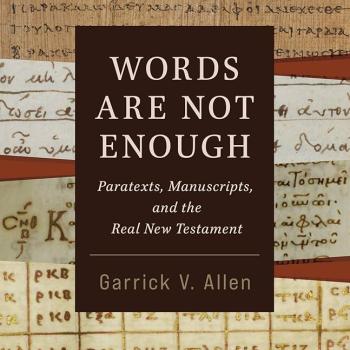I mentioned in a recent post that I had been reading William Dever’s book, The Lives of Ordinary People in Ancient Israel: When Archaeology and the Bible Intersect. That book (for which I am grateful to Eerdmans for having sent me a review copy) deserves more than just a mentioning in the context of Gen Con, and so I wanted to say a bit more about it. Dever’s book is actually something much more significant than the title may actually reveal: it is the first attempt to write about the way of life of ancient Israel (focusing in this instance on the 8th century BCE) initially based on archaeology alone as the primary data, and then and only then to bring the Biblical texts into the picture. It aims to produce a “history without the Bible” – but not in the sense that the Bible is excluded altogether, only in the sense that the Bible’s evidence is recognized to be secondary, as all textual accounts are in relation to archaeological data.
Dever is aware that a book of this sort could not have been written until very recently, but that the growing abundance of archaeological work has made it possible. Dever writes as a secular humanist, uninterested in either proving or disproving the Bible, and he thus finds himself disagreeing with both the revisionists and the fundamentalists (p.372). He devotes a significant amount of time to addressing the movement known as “minimalism” which he exposes as a postmodern rejection of history (p.28).
For those whose interest in archaeological and historical work precisely in relation to the religion of ancient Israel, Dever’s work on this subject, and attempt to relate the archaeological and textual data in insightful ways, yields important results. Here is a sample (pp.292-3):
For the masses it was practice that mattered, not the correct theological formulations of a few literati (including those idealists who wrote the Hebrew Bible). Thus we cannot look to the textual traditions to illuminate practical or folk religion. Only archaeology can do that…
In a harsh environment, at the mercy of the elements, surrounded by hostile foes, most people sought to placate the gods and seek their favor as best they could…
Perhaps 99 percent of the population in ancient Israel and Judah were illiterate. They couldn’t have read Bibles even if they had them. They had never met a priest of the royal establishment, nor even visited the Temple in the capital (perhaps not even a regional administrative center). Their entire life revolved around the family, the village, the clan, the world of nature, and the rhythms of the changing seasons…
Some of the upper classes in the few larger towns and cities might have been more theologically sophisticated. But for most, the household shrine was the only temple they knew: the religion of hearth and home. And women of the households – wives, mothers, daughters – were just as likely to serve in the role of ritual expert as any priest. Unless religion worked in that small sphere, it was of no use and would not have survived. It is the artifacts that people made, used, discarded, reused – not the texts of the Great Tradition – that reveal the most about the reality of their daily lives. If histories of Israelite religion are to be written in the future, they will have to incorporate the vast array of information that we now have, thanks to the archaeological revolution that Albright confidently predicted. It has come, even if with some unintended consequences.
The data Dever is referring to includes the many figurines and cult centers which the Bible says little about, except to condemn them.
This book will be too detailed and technical for the average person looking for a simple depiction of daily life in ancient times. I sincerely hope that archaeologists, historians, and Biblical scholars will not mistake this book, because of its title, for that kind of volume. It is a pioneering work of history in the way it approaches the Bible and archaeology, and whether following or challenging its example, it is a text that all future work on the history of ancient Israel needs to engage with.













